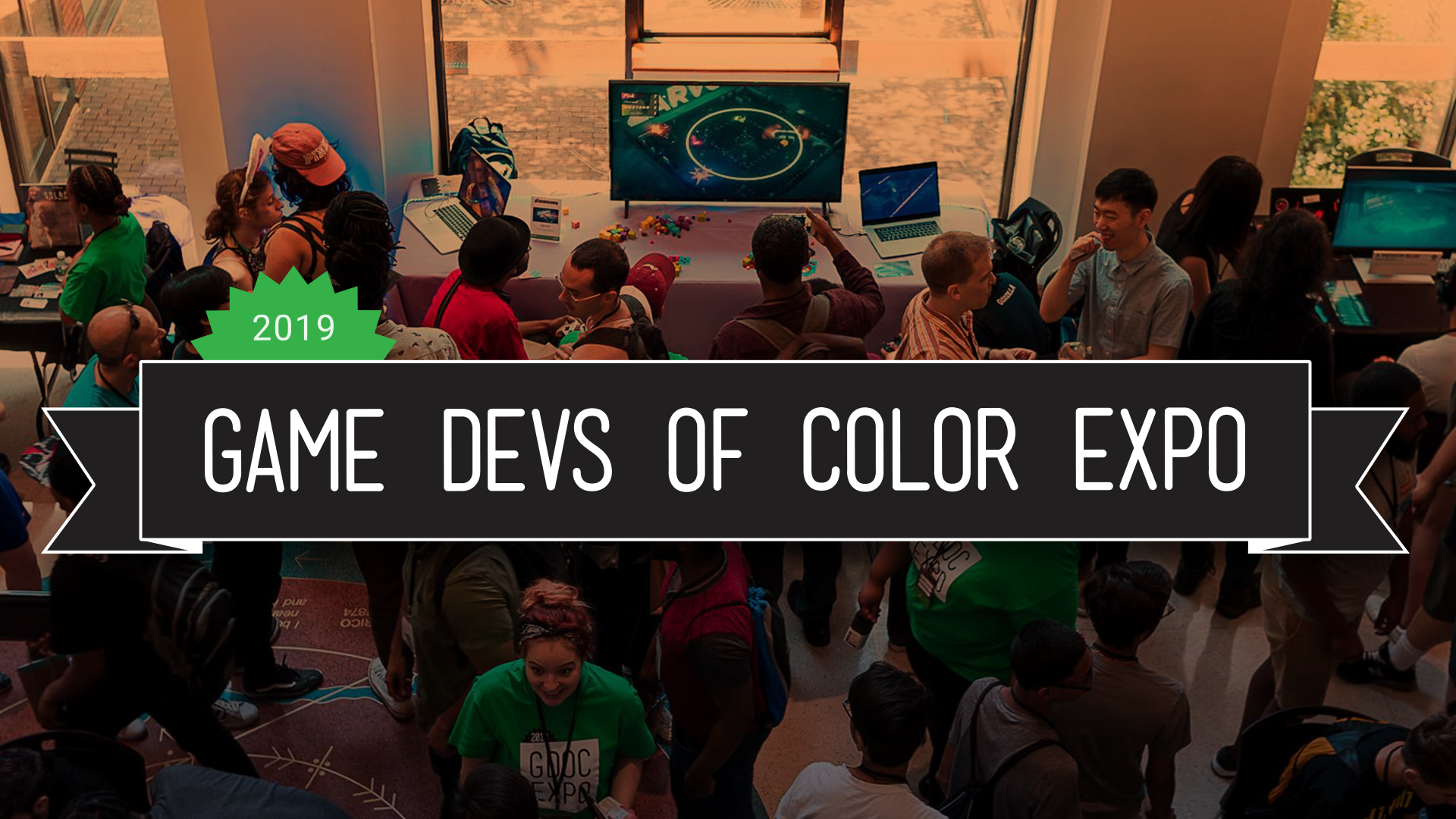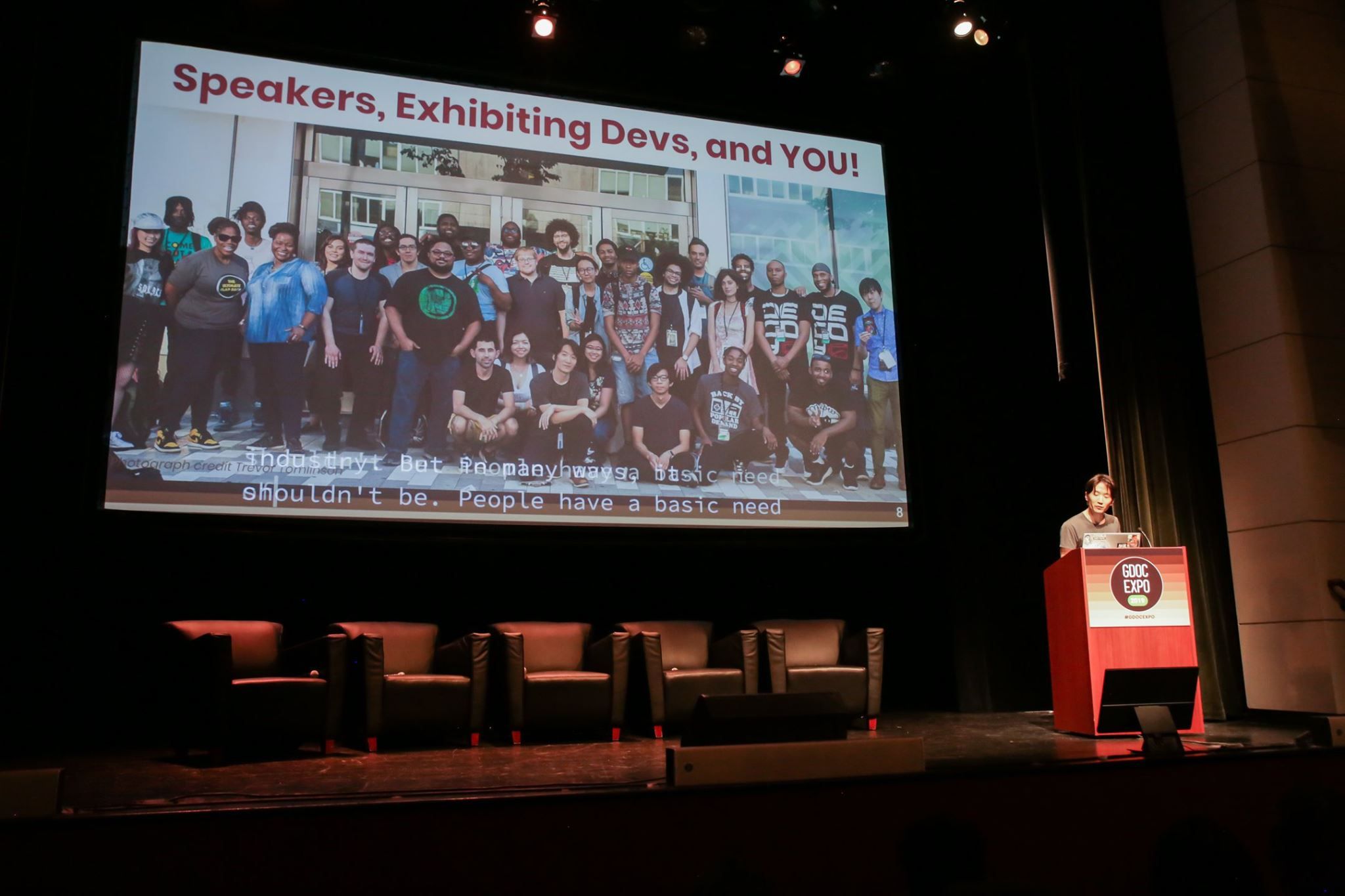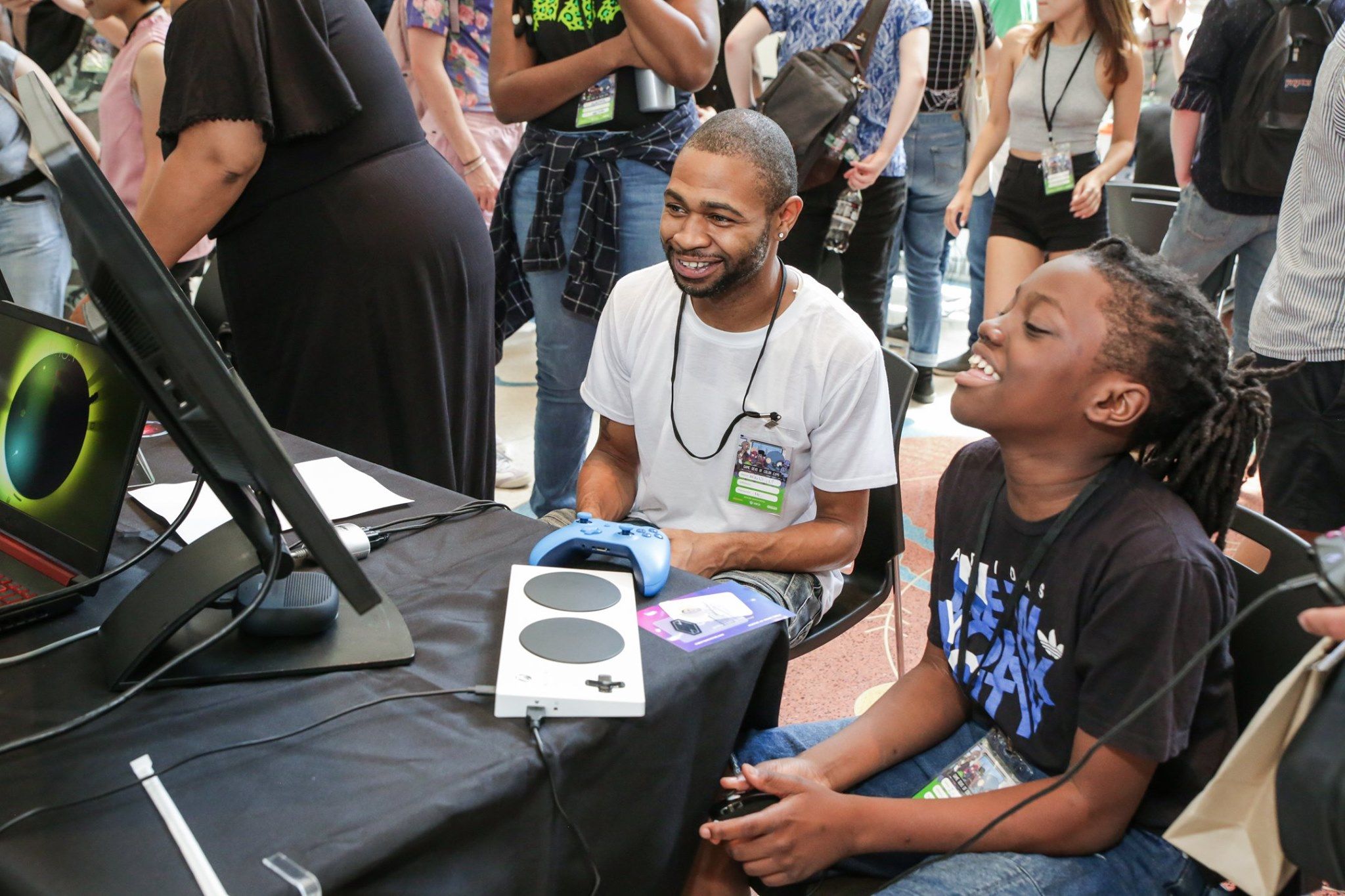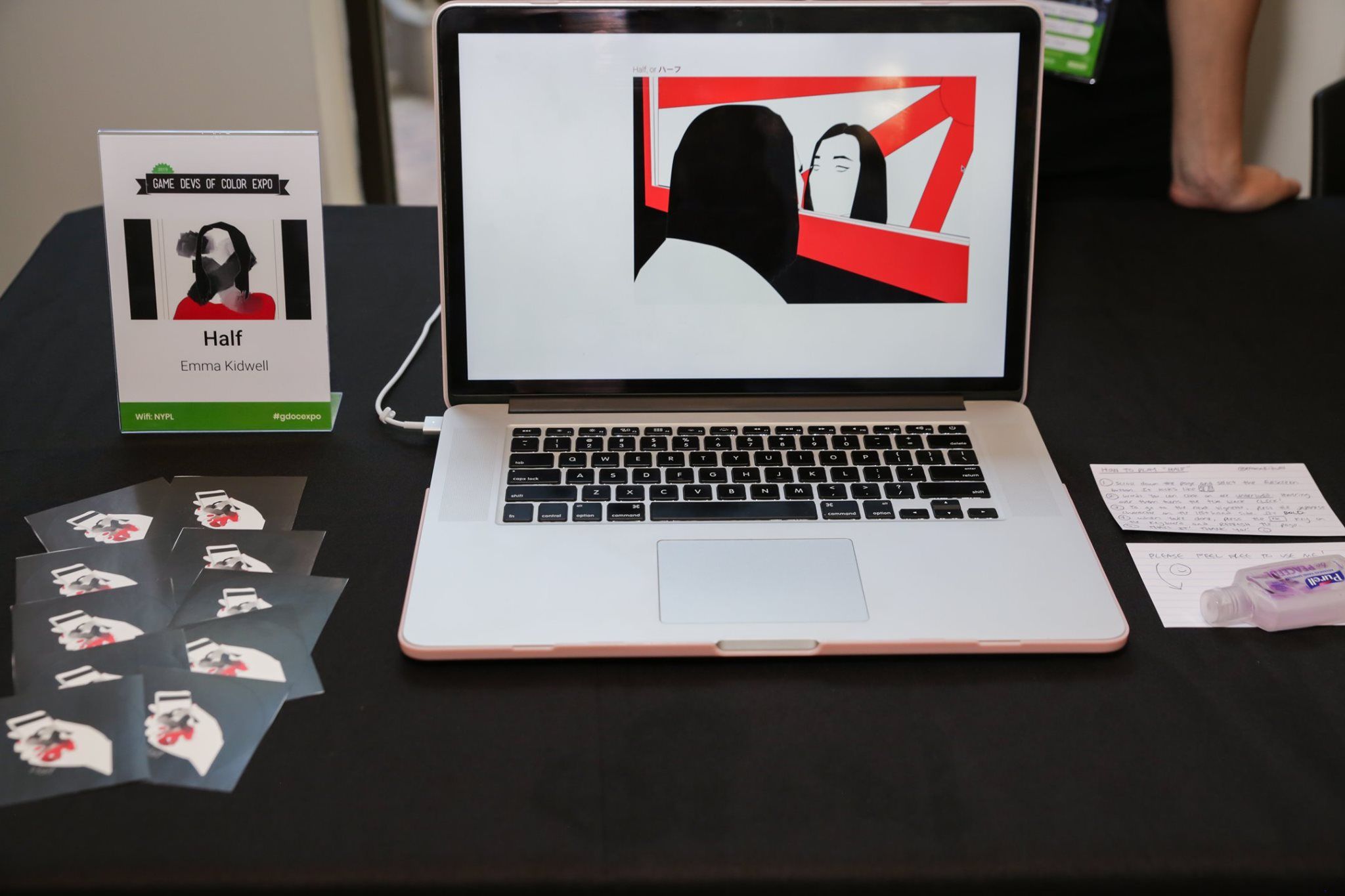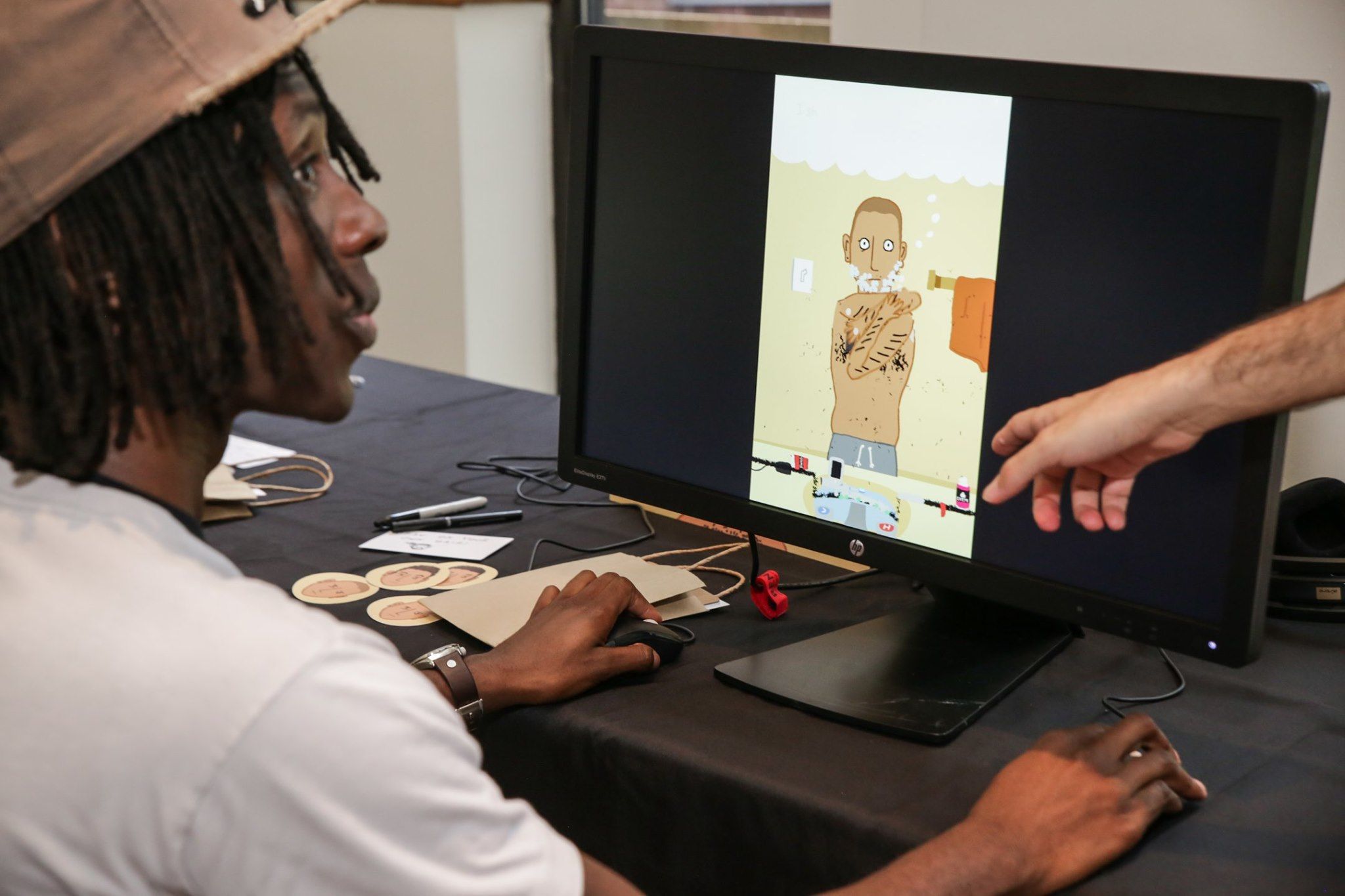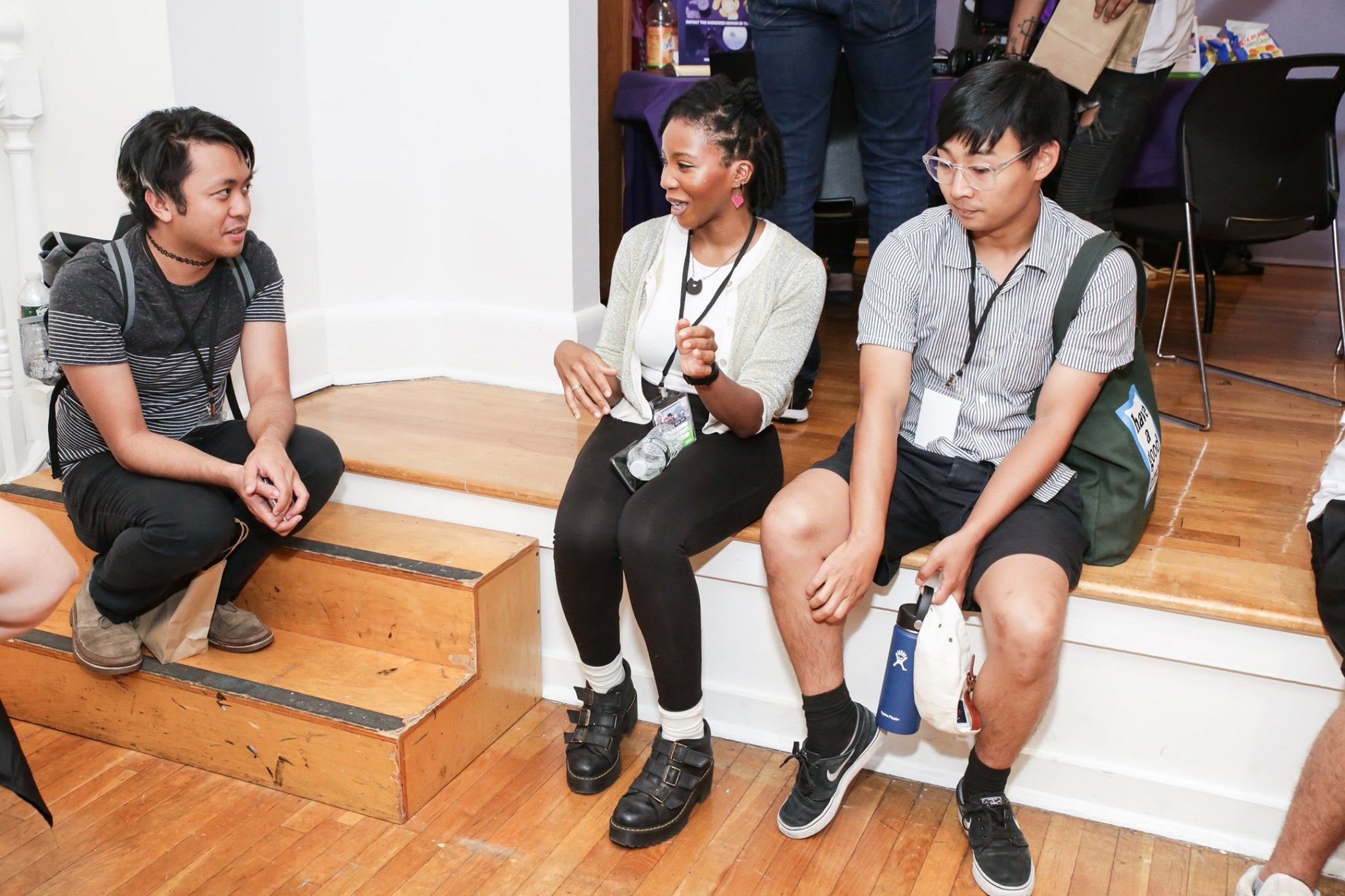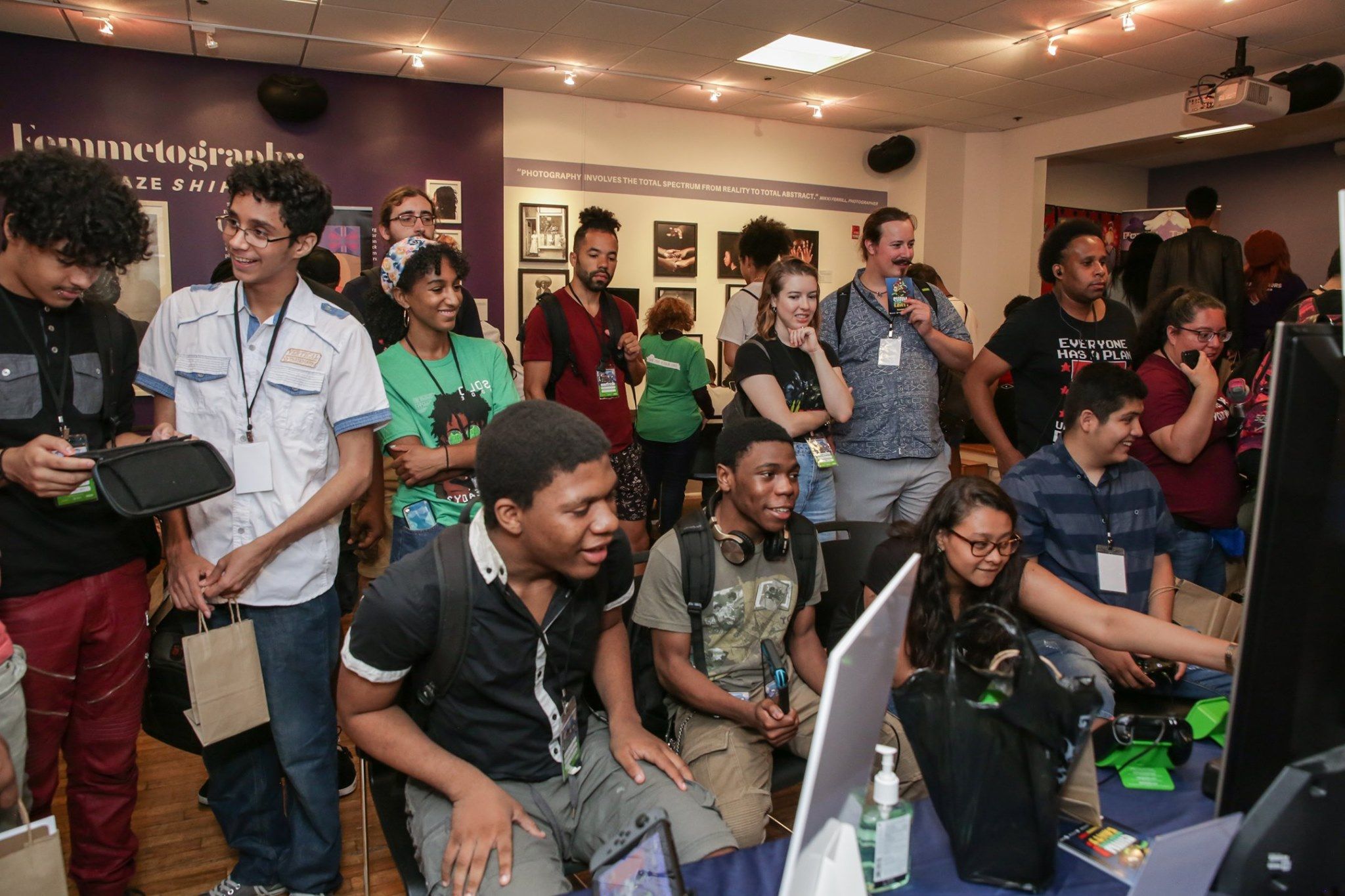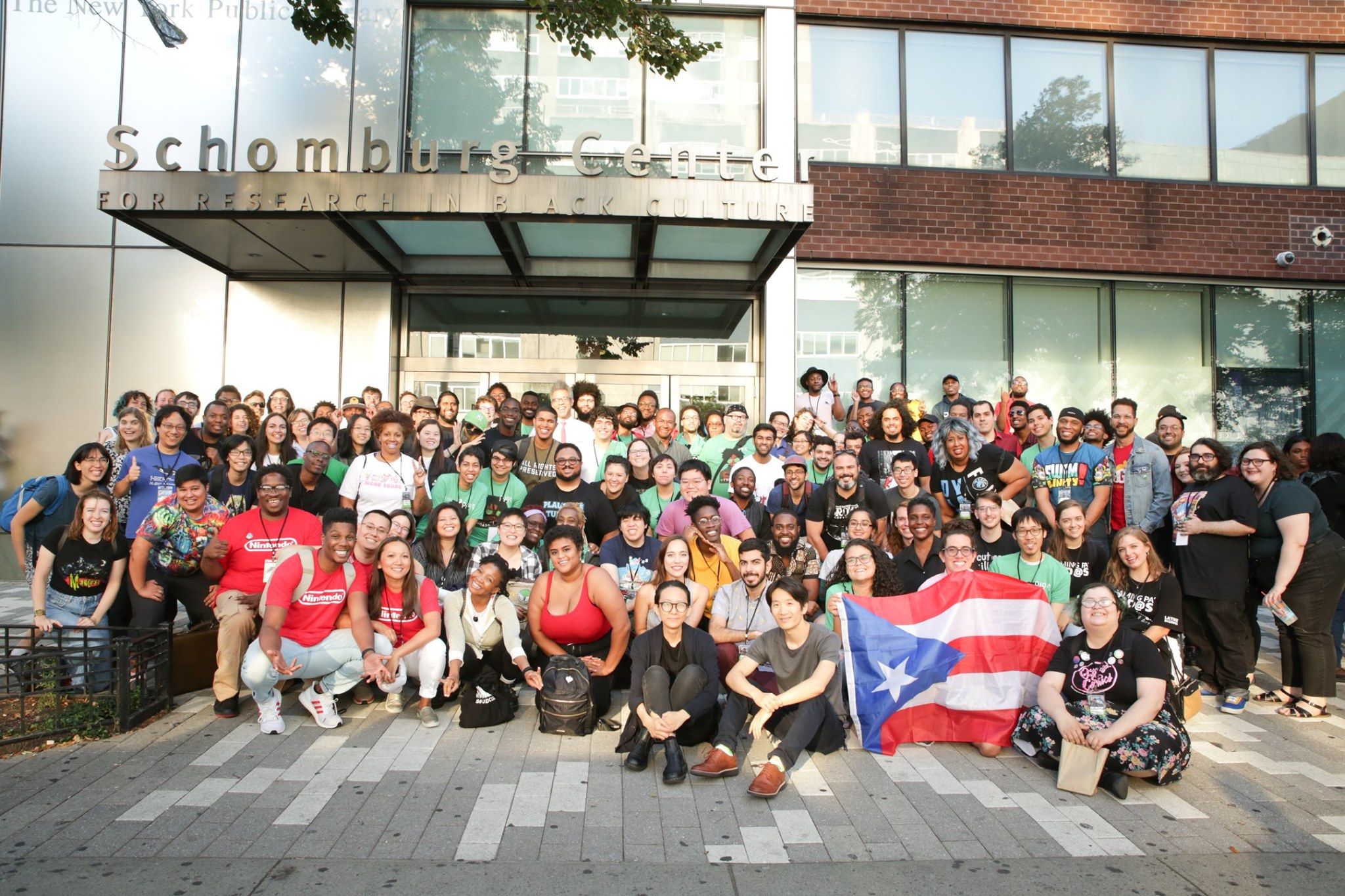On the last weekend of July, I drove over to the heart of Harlem in New York City to attend the Game Developers of Color Expo. This was their fourth annual event, gathering independent developers from across the globe, as well as representatives from bigger sponsors like Nintendo and Microsoft, at the New York Public Library's Schomburg Center for Research in Black Culture. With a meeting of the minds for people of diverse backgrounds, I was curious about what the tone of the event would be given the current political climate.
In short, it was one that espoused positivity—but that positivity has only been achieved by the attendees and speakers after overcoming anxiety, both societal and personal, and numerous hardships, whether they be internal or systemic. GDoC, more than any other gaming expo, shows the value of having creators from marginalized communities in the industry, with a wealth of unique knowledge and experiences to share through their art. If there is anything to be gathered from my time at GDoC 2019, the largest one thus far, it's that there isn't a prevailing sense of direness amongst game developers on the margins—but that isn't to say that the industry still has a long way to go.
[pullquote]"GDoC, more than any other gaming expo, shows the value of having creators from marginalized communities in the industry..."[/pullquote]
I spent the first couple of hours at the Schomberg Center exploring the space, relatively smaller than other popular game expos. There were three floors, with some of the main sponsors and the lecture hall being on the first, board and tabletop games on the bottom floor, and numerous video games on all three levels. On one side of the first floor, you have a line of experimental titles and Twine narrative-focused games, while right across from them is Nintendo showcasing Labo. It's an intimate setting, and the organizers were likely pleased to see the space completely filled up.
After meandering about, I caught two of those expo organizers, Brian S. Chung and GJ Lee, and sat down with them for a brief chat about the history and purpose of the event. The key takeaway from my conversation was the importance of the expo's accessibility to developers compared to that of other conventions. Game developers have come from all over the world, but it doesn't cost those developers anything to exhibit at the expo, with GDoC providing tables, monitors, and headsets for free.
"Basically, we're all about removing barriers between the devs and their audiences," Chung told me. Lee followed up by mentioning how the cost travel is a practical expense that indie developers struggle with, which GDoC also tries to give support for. Through the expo, indie developers can share resources and make connections in an easier environment, whereas more "mainstream" expos, Chung says, may exclude indie developers on the margins wither directly or indirectly.
After an extensive conversation on the overall purpose and goals of the expo, Chung and Lee informally gave me a roadmap of the games to look out on the floor. It was a good mix of traditional video games that had little to nothing to do with identity and a number of very personal and culturally-aware games. As enjoyable as the former category was, the games with the theme of identity at the center are the ones that stayed with me.
Whether it was intentional or not, many of the traditional video games I played at GDoC 2019 were local multiplayer games, and pretty fun ones too. The first one I tried out was Decoy Games' Swimsanity!, which I recognized from a Nindies presentation from earlier this year. It was a four-player arena arcade combat game, and while it got hectic and confusing at times (any game of that genre will be at first), the numerous options it gave to players added a lot of depth (no pun intended) to the combat.
On the simpler side was the minimalist multiplayer title HyperDot from Tribe Games, perhaps the most addicting game I played at the event. The premise is simple: players take control of a dot in a circle and dodge incoming shapes and obstacles. Perhaps it's a concept that you think you could have thought of, but a number of game variations and modes provided new rules to add layers of strategy and keep the game unpredictable.
In case you remember the news about that strange little Playdate handheld console from Panic that was announced earlier this year, the device was there to try out on the floor. The first thing that will stick out is boy, that thing is small. Barely larger than my palm, I thought it perfectly encapsulated Panic's goal of making a plaything. The crank felt satisfying to rotate, and I got some hands-on time with a charming and creative title from Katamari creator Keita Takahashi, titled Crankin’s Time Travel Adventure. It certainly felt like a toy, a term I don't mean to use derogatorily, and its crisp animations, black and white graphics, and sound design have to be experienced in-person to really believe.
If a crank was already considered to be a strange control input, imagine using two plastic fish. Sashimi Slammers from Furious Fish Friends uses two custom-made fish controllers, which unfortunately are not available commercially. The fish controllers have two buttons that you basically smack with your hands, one making your fish flop forward while the other is an attack input, with the goal being to knock your opponent into a deep fryer. I'm all for including this at next year's EVO.
After having my fun with cranks and plastic fish, I sought out some more identity-focused games, and I quickly found an underlying theme of dealing with anxiety based on societal perceptions of people of color. I was instantly drawn to Half (itch.io link here), a deeply personal and autobiographical narrative title built with Twine from Emma Kidwell. Based on her life experiences as a biracial woman, Half took the player through a number of vignettes and moments in life.
These were moments that were defined by microaggressions from numerous different parties and a strange sense of culture shock; for instance, one particular vignette focused on the gradual fading bilingualism in her household, with her mother slowly phasing out Japanese for English. It was hard to not project myself into these stories as I've had analogous emotions from my own experiences, despite my different background from Kidwell; but she wasn't surprised that I found an overlap between us.
It was a game that focused on alienation, a sense of being stuck in-between two cultures and not necessarily belonging to either, with physical appearance and presentation being a large contributing aspect to that feeling. I related as a Filipino-American, treated differently in the States for my skin color but out-of-place in the Philippines, a completely foreign place to me despite my looking the same as everyone else. Half was therapeutic to play, but not as therapeutic as it was to make for Kidwell—still, the game is "no replacement for therapy," she told me.
[pullquote]"...I quickly found an underlying theme of dealing with anxiety based on societal perceptions of people of color."[/pullquote]
Similar thematically to that was Pre-Shave from Saam Pahlavan (itch.io link here) which took a quirkier tone. Pre-Shave was all about the anxiety of being a brown man with a lot of body hair. The game had me use two mice, one controlling each hand, as my character looked in the mirror, with thought bubbles at the top of the screen relaying his thoughts of anxiety as I attempted to groom this character.
The controls were a bit unwieldy, almost in a QWOP sort of way. But to me, it was an emulation of the pure physical awkwardness of shaving, especially when you're unsure of what the final result should be. You'll have an electric clipper, a razor, shaving cream, water, and a towel to use, and the process was comically messy, with chest hair flying out like wood chips. The ending of the game, the same no matter how you shave, was a downer, but Pahlavan basically told me that the message of the game is accepting that life will just be like that, based on social perceptions of brown people.
It's not exactly the most positive message, but one based on our current reality. The game was essentially designed as a joke, with the ending being the punchline; not to make light of that social perception, but rather to highlight taboos that tie in body hair with identity. Pahlavan told me that based on his observations, most players would usually start with a clean shave in the lower half of the character's face, perhaps telling us what society deems "acceptable" for physical appearance in this country.
Also embodying the themes of appearance and microaggressions was SweetXheart from GDoC co-organizer Catt Small (itch.io link), a visual novel that challenges players to have one good week as a modern black woman. The character of Kat, a 19-year old girl in the Bronx, attends an art school and interns at a tech company, with the player guiding her through five days; the crux of the gameplay is her mood, represented by a bar.
A number of factors can affect that mood bar: how you respond to catcallers on the streets, whether or not you're honest with your friends, confronting coworkers for language and behavior, and how you dress yourself every morning. It may seem menial at first, but the choice of outfit is a huge variable with how characters interact with you. As I navigated through these small moments, I struggled to keep a consistent mood, with the bar fluctuating. Eventually, I had reached a high in my mood at the end of Friday, only for one bad interaction with a single catcaller to bring it plummeting down.
It's honestly an accurate gauge of mood and anxiety, with so many tiny factors having a large effect. Like Half and Pre-Shave, SweetXheart was about realizing a reality, one based on race and appearance, but as Small told me, the game was about "making the most of it." Acknowledge the reality, but don't submit to it.
[pullquote]"[SweetXheart is] honestly an accurate gauge of mood and anxiety, with so many tiny factors having a large effect."[/pullquote]
There were a number of other games at the expo that I thought carried that spirit of keeping your head up high, one being the upcoming She Dreams Elsewhere from Studio Zevere (itch.io page), a turn-based RPG that recalled Earthbound for me. The color palette of black and white with occasional and selective bright colors was striking, as were the enemy designs that were very much based on different forms of anxiety and depression.
Also represented were board and tabletop games, many which brought their own unique subject matter. Queering Spacetime from Joyce Lin, for one, has players roleplay as queer girls and going on a series of dates with a number of different lovers across space and time. Rap Godz from Omari Akil is a board game that has players take the roles of up and coming hip-hop artists, with the game focusing on both strategy and storytelling.
By the end of the expo, I was speaking to Xalavier Nelson Jr., one of the creators of the narrative game Can Androids Pray (itch.io link). We had a candid conversation about the importance of telling these stories through games, and how AAA game companies are approaching them. Essentially, it comes down to people with power and privilege within those companies to advocate for implementing themes of diversity in larger games. There is a positive movement towards a larger inclusion for those themes, but many AAA games will find those themes instead delegated to side-quests or more nuanced moments, leading to a perception that they aren't worth caring for.
[pullquote]"Essentially, it comes down to people with power and privilege within those companies to advocate for implementing themes of diversity in larger games."[/pullquote]
And as organizers of the event, Chung and Lee remind me during our talk, game developers of color still have an uphill battle. But luckily, no one I spoke to gave any signs of giving in, and the progress that events such as GDoC and the games it showcases highlight that the efforts to push diversity aren't for naught, both in indie spaces and in the larger games industry. According to Chung, "the industry is apparently not supporting certain demographics, whether that's their existence at all in big AAA studios, or whether they're in, but they're not advancing to senior or manager levels."
But as Chung pointed out, companies like Nintendo and Looking Glass Factory were at the expo recruiting developers. I asked the organizers why AAA studios may see the value of hiring developers on the margins. "I don't want to speak for them, but I do know that there's a lot of research out there that says that diverse teams perform better," said Chung. I also asked what the gaming community could gain from playing these games. "The bottom line is that these are all great games to play," said Lee. "It's also meaningful for younger people who are just starting out to see developers who look like themselves and not think that it's not for them," added Chung. Citing Pre-Shave and SweetXheart specifically, Chung emphasized: "Stories like these, you're only going to get them from creators like this."
"The thing is, in a lot of ways, these devs at the margin are sometimes brought into mainstream events [to show] 'yeah, we're diversifying,' or 'this is an add-on feature.' What we're trying to do is to make this normal. We describe this event as creating a new normal in the game industry. These people shouldn't be considered to be on the margins. We want them to be included and we want to see that change happen," Chung summarized. But are we making that progress? "That's a tough question," said Lee, "but you have to look at it as a long-term big-picture thing. There's some good change happening."
So the Game Developers of Color Expo is here to stay, for the time being, and helping to nudge the industry in a more inclusive direction. From an optimistic standpoint, the organizers seem to believe that larger expos are using ideas from GDoC, with the organizers' hope being that mainstream events will be more intersectional and inclusive for developers of all different backgrounds. In an ideal world, I suggested to Chung and Lee, ten years from now there won't be a need for GDoC if game developers of color being an integral part of all expos really is the new normal. "Hopefully it happens sooner than ten years," said Lee.
Be sure to check out the Game Developers of Color Expo website for information on the event and the selected games, as well as their YouTube channel to watch all of their talks.

